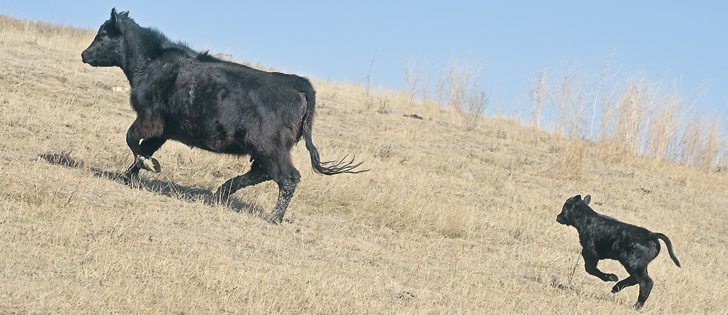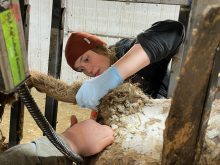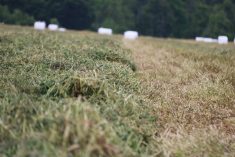EDMONTON — A simple test can determine if a newborn calf needs extra help getting nutrition.
Place two fingers longitudinally in the calf’s mouth to assess strength of suckling reflex. Those with a strong reflex are likely to get going on their own within a few hours, while those that seem weak may need help getting enough colostrum, says a researcher at the University of Calgary’s faculty of veterinary medicine.
“Suckle reflex seems to be a very good tool to recognize this group of compromised calves,” said Elizabeth Homerosky, a veterinarian and the first Simpson Ranch Fellow in Beef Cattle Health at the university.
Read Also

Feds propose overhaul of chronic wasting disease control program
Chronic Wasting disease control program getting updated by Canadian Food Inspection Agency with feedback encouraged from producers.
The three-year fellowship combines a master’s of science and clinical residency with board eligibility in beef production medicine through the American Board of Veterinary Practitioners.
Some of Homerosky’s research involves newborn beef calf vigour and the effects of dystocia on pre-weaning growth and health.
A difficult calving or other trauma can reduce vigour. Calves’ immune systems may suffer if they do not get enough colostrum.
A 2009 study found that up to one-third of beef calves in Alberta and Saskatchewan had sub-optimal immunity. They had a greater risk of getting sick or dying before weaning.
Homerosky has found that the ability to suck does not appear to be related to whether the calf had a difficult birth.
Part of her research monitored 77 calves born on a large ranch in southern Alberta in March 2014. All required assistance to varying degrees, and her intention was to monitor their vigour in the first hours of life and make sure they started to receive colostrum as soon as possible.
“The absorption of maternal antibodies is very critical to the overall health of that calf. That makes newborn calf vigour a vital survival tool,” she told the Livestock Gentec conference held in Edmonton Oct. 13-14.
These calves underwent a series of tests within 10 minutes of life. Their reflexes were checked, birth weight recorded, heart rate measured, colour of gums noted, tongues checked for swelling and blood collected.
They were placed in maternity pens with their dams and observed.
Every calf had four hours to stand up and suck on its own. Assistance was provided to deliver colostrum if they could not.
Most got up within the first four hours after birth, including those with difficult births following a caesarian section or use of a calf jack.
The research did find that calves with weaker sucking reflexes may have had less oxygen in their blood. The problem may have started in utero because less oxygen uptake by the brain might impair the ability to perform certain reflexes.
The calves were monitored and most recovered.
“Almost everybody was normal at 24 hours,” she said.
Homerosky concluded that knowledge of a newborn calf’s vig-our has the greatest value to ensure it recovers, regardless of calving ease. Providing extra colostrum could make a difference if necessary.
“If you have a calf that has a very weak suckle reflex regardless of their calving ease, putting a management plan in place to help assist that calf in colostrum delivery is really important,” she said.
















